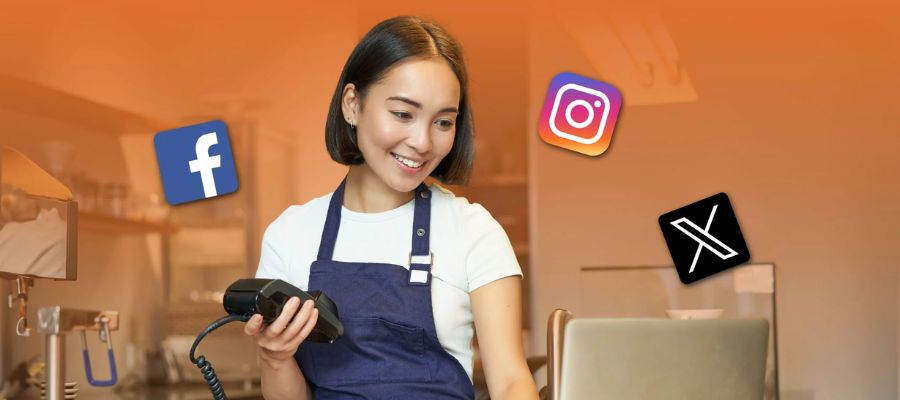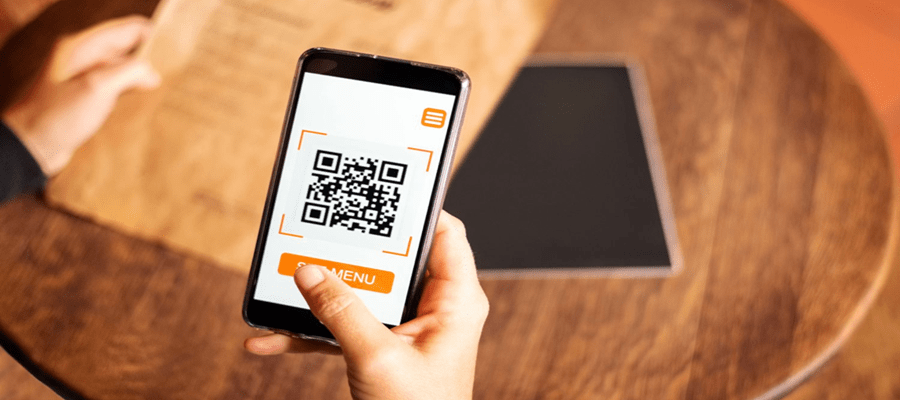
Incorporating Social Media with POS Systems
As for contemporary understanding and experience, it is impermissible for businesses not to have an Internet presence to sell to as many customers as possible. One proven method for increasing your company’s presence on social networks is the integration of the POS with social media. It can help you promote products or services, present new offers, collect feedback and analytics, and improve customer interactions.
Social Media Integration is the act of incorporating social media networking aspects into a website.
Website integration with a Social Media profile means linking your website to your social media handles such as; Facebook, Instagram, and Twitter, among others in a way that they feed the content that is posted on your website to those accounts. It also allows you to integrate your social media activities into your website and display them on your web pages.
Some common ways to integrate social media with websites include:
-
Place links to social media sites These are usually located at the bottom of your website’s pages and enable people to share your website on their social media accounts.
-
Share updates across social platforms Blog posts, products, articles, and related content can be shared on social platforms.
-
Display of social media feed Incorporating the most recently displayed Instagram feed or a Twitter feed on your website is credible.
-
Import reviews from Facebook This pulls the latest reviews from customers who have connected their Facebook accounts.
-
Social login – Let customers be able to log in to the site and make use of their social accounts such as Facebook or Google.
-
Social network referral analysis Determine the amount of traffic being trafficked from the various social platforms.
Social media integration enhances the website traffic, visitor interaction and the resultant conversion rates. It also creates brand identity and coherence when it comes to the social media platforms being used.
POS Integration with SAP
SAP or Systems Applications and Products is the enterprise resource planning that can be used with POS in retail stores. This enables the integration where the two systems, the SAP ERP and POS, exchange data with each other automatically.
Key benefits of SAP and POS integration include:
-
Point of sales update – Sale/inventory data are transferred from POS to SAP ERP for inventory access and update.
-
Demand management By integrating POS sales data, it can be possible to determine inventory requirements from SAP.
-
Financial accountability – This means that the use of complete transaction data means that financial accountability can be controlled in a more effective manner.
-
Supply Chain Efficiency Low inventory alerts can trigger orders of new stocks.
-
Customer relation development – With all customer information being held in one central databank, it is easier to embark on marketing campaigns and loyalty schemes.
The integration procedure includes settings of the communication channels such as online OData API that allows POS data to be fed in real time into SAP. Another form of batch data integration is also offline due to the ability to transfer data in small amounts at fixed intervals.
When POS systems are integrated properly with the SAP, companies experience increased sales, reduced costs and effective streamlining of operations.
You can integrate your POS with your website in the following ways;
Connecting the POS system with your business website brings about efficiency due to the automation of processes and synchronization. Some ways to integrate include:
-
Automated stock update – Automatically sync up product stock, prices, images and any other change on the POS to the website catalogue.
-
Order management – New orders that have been placed via the website should be integrated with the POS solution. This will enhance order tracking and the status of inventory.
-
POS and website integration – Purchase history, customer contacts, etc. are synchronized between POS and website, and the customer can experience one coherent account.
-
Promotions integration – Online promotions made at POS can be the same as those used in website promoting, increasing the sale conversion rate.
-
Analytics compatibility Sales and traffic may be compatible with other enterprise systems to provide adequate reporting.
In terms of technical integration API based integration is the most appropriate. Features such as POS integration, although not built directly into Shopify, can be installed through plugins. It also means custom middleware can also facilitate and automate the transfer of data between POS and website databases.
Effective POS integration with your website ISG offers 24/7 product sales exposure and assists in maintaining uniformity in online and offline customer experience.
POS Integration
Integrated POS means linking the POS with other systems of the business to automate the flow of data and paperwork. Omnichannel retailers need to integrate their brick-and-mortar store POS solution with e-commerce systems, CRMs, inventory management, accounting software, etc. Key benefits include: Omnichannel retailers need to integrate their brick-and-mortar store POS solution with e-commerce systems, CRMs, inventory management, accounting software, etc. Key benefits include:
-
Centralized customer database – This means that all profiles are unified across all the channels and offer the purchase history of the customers.
-
POS Sales Data – accurate and timely data regarding inventory levels is important in the supply chain.
-
Fewer errors – With central website management, orders placed are retrievable at POS enhancing the experience of the customers.
-
Analytics and reporting – centralized data gives a wide-range report across the enterprise.
From a technical standpoint, POS integration involves having an open API-supported POS system that can connect through live real-time updates or batched updates with a number of protocols. Integration capabilities depend on the type of integration It can be basic integration, where the integration is linked and runs in parallel with the software, and advanced integration, where data is integrated in real-time and is compatible with the software.
Thus, having pos integration capabilities such as order management, inventory control, payment processing and customer management ensures increased pos integration leads to a unified commerce platform for increased revenue.
POS Machine Integration
MPOS, Smart Terminals, or mPOS tablets with connectivity interfaces can be connected to the appropriate merchant services, accounting software, and e-commerce channels. Benefits include:
1. Payment Integration – Enabling card payment through integrating payment terminals through Bluetooth, NFC or LAN interfaces. This involves the implementation of payment gateway integration to facilitate the transactions.
2. System Interface – POS systems in restaurants can be interfaced with inventory management apps, loyalty apps, and reservation booking via API.
3. Hardware Compatibility – Additional peripherals such as cash drawers bar code scanners and printers can be interfaced with the POS machine to facilitate automation.
4. Integration to Accounting – The sales and/or expense data flows directly into the accounting software such as QuickBooks for better control of the finances.
5. Marketplace Integration – POS connected with online portals like Amazon, Flipkart etc or food delivery interface allows to sell to more people.
6. Customer Database Integration – With integrated data the idea of one-stop promotion across different channels can be very effective.
This is a perfect fit for standard interfaces such as REST APIs, typical for microservices, but also for POS hardware like receipt printers or barcode scanners, which are also plug-and-play. Integrated systems make POS machines into the central control and display centres of today’s retail stores.
Social Media Post API
Many SNSs such as Facebook, Instagram, Twitter, LinkedIn, etc have developer APIs through which you can post content on the feeds of your business profiles. These POST APIs help you to link your website or app easily and share the content on social media.
Some capabilities of Social Media POST APIs include:
1. Text Updates API – post texts as status on social accounts without the need for third-party apps.
2. Photo Upload API – This means uploading multiple files at a time for product images to specialized photo-sharing services such as Instagram.
3. Video Upload API – Provide videos for mentioning marketing campaigns.
4. Auto Tagging – Get influencers to hashtag or mention you when you are posting content.
5. Post scheduling – This involves posting messages on social sites at a certain time in the future.
Social Media POST APIs have the following benefits:
-
Automation: The use of Social Media POST APIs will save a lot of time that one can use to do other productive work since posting will be done mechanically.
-
Brand management: Since posting will be done mechanically, the same thing will always be posted on all the social media accounts hence ensuring that branding is well done.
-
Visibility: The number of people that will be able to see the post is very high hence more people
POST APIs that are specific to each platform can assist in the synchronization of social media with the marketing technology ecosystem for unity across channels.
For instance, leading social media management platforms such as Hootsuite and many others also provide features that can be used to ease the integration process. In its entirety, social media API integration allows for enhancing the overall digital presence.


